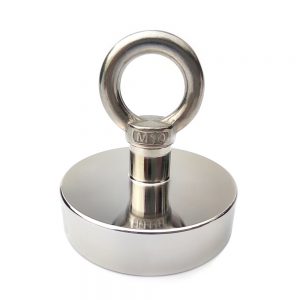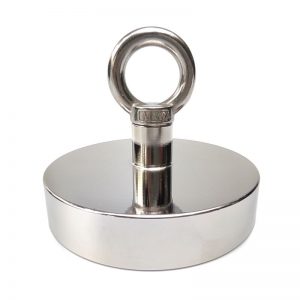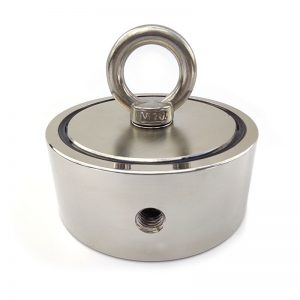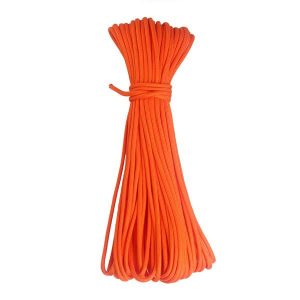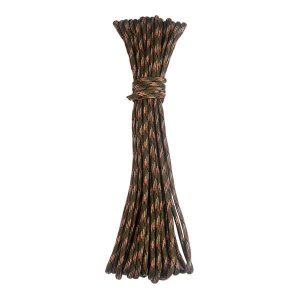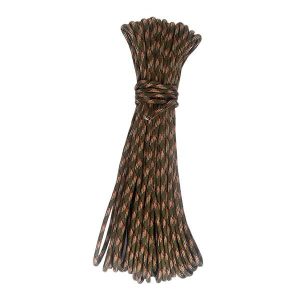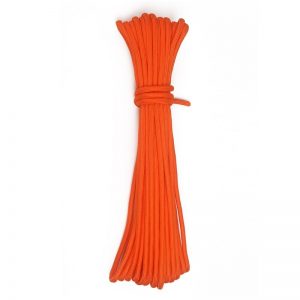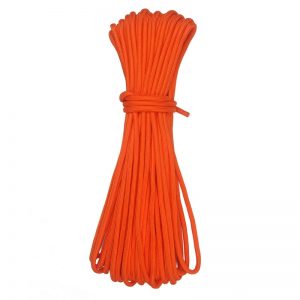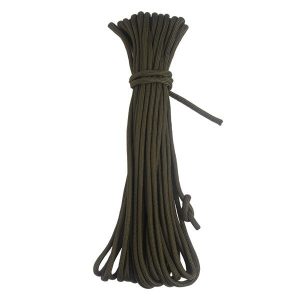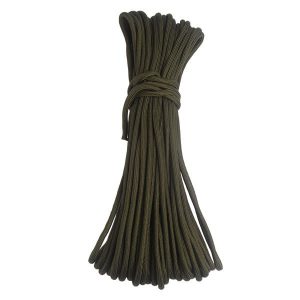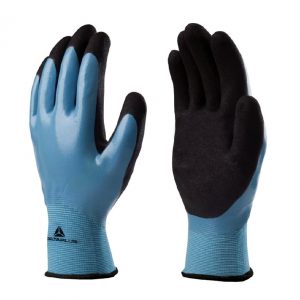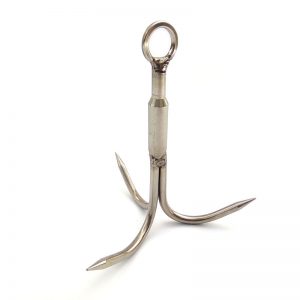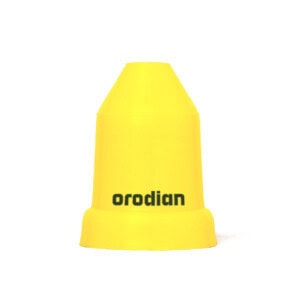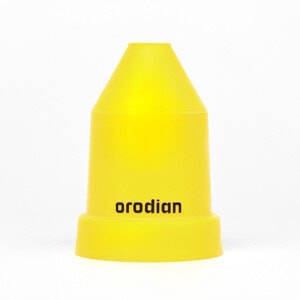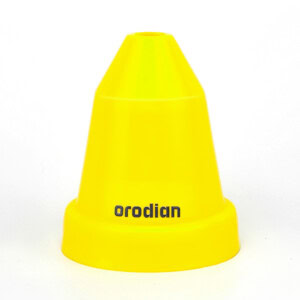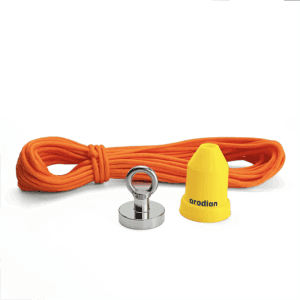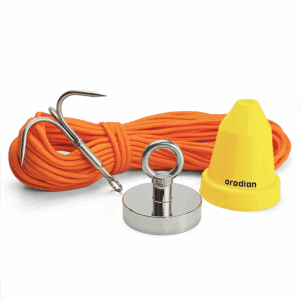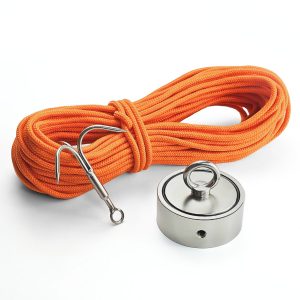Magnet fishing: find iron treasures at the bottom of rivers
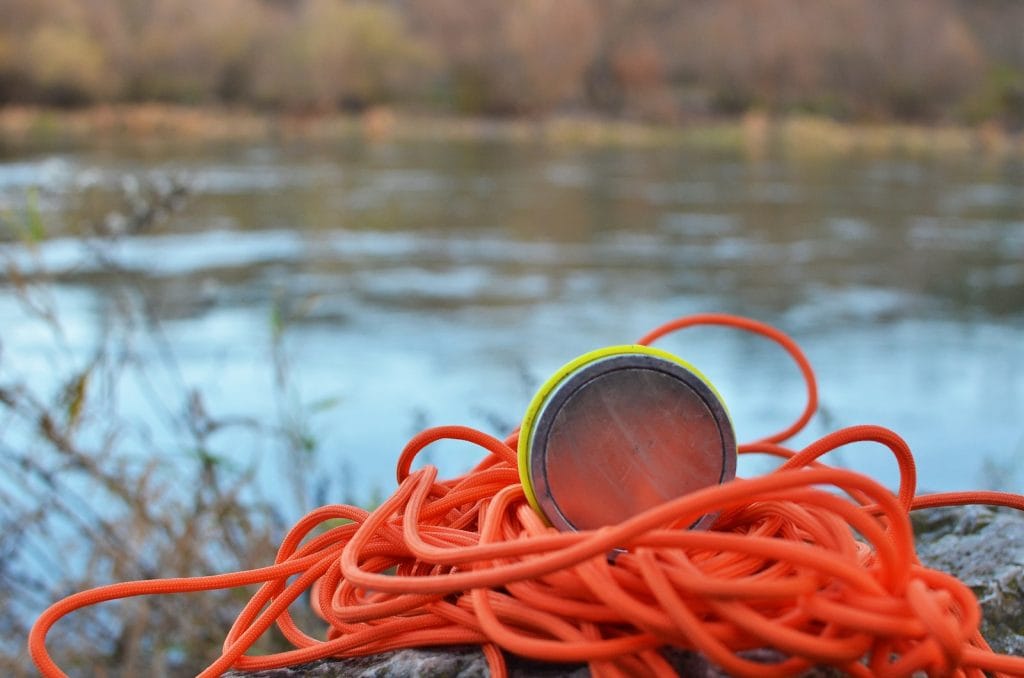
Magnet fishing is the search for metal objects under water. You throw a magnet tied to a rope into a river or lake and pull out something iron from the bottom. It is an increasingly popular hobby in the world.
Treasure hunting is fun and exciting. Every time you throw a magnet into the water, you are full of anticipation of what you will find. Sometimes you can laugh out of joy at a find. Slovakian Ján Hudec, for example, found a French condom machine in Kozárovecká Reservoir:
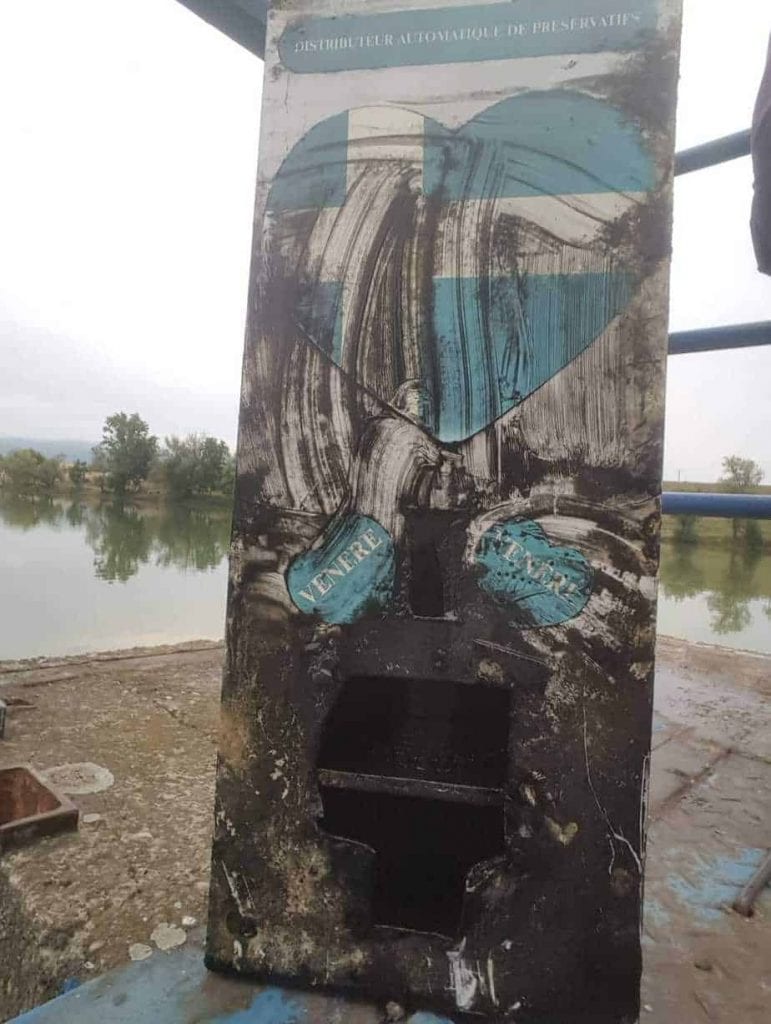
What can you catch? In addition to cartridges, weapons, a safe or a bicycle…
Many valuable objects are hidden at the bottom of rivers and lakes. Weapons, ammunition, safes and historical artefacts are a big attraction. Coins, knives, nails, fishing gear, mobile phones or hard-to-identify iron objects are common finds.
The good news is that this hobby does not have a long history in the world. Thanks to this, there are still many undiscovered treasures in our rivers and lakes. The chance of success is therefore high.
However, there are already great finds today. Three men – Oto, L-ko and Kiťo from the Magnetfiške team found in the water with a magnet a safe containing CDs, payment cards and an identification card of a foreign resident. The finders called the police, who took away the safe and the rest of its contents.
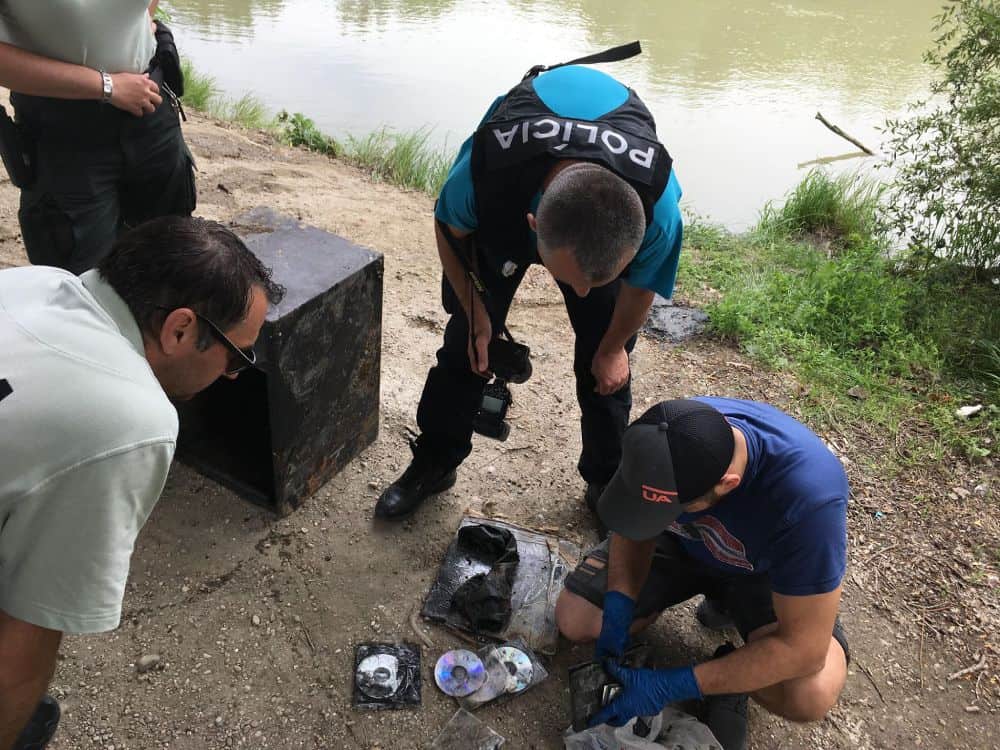
Our customer Lukáš Drozd found an air pistol in the river:
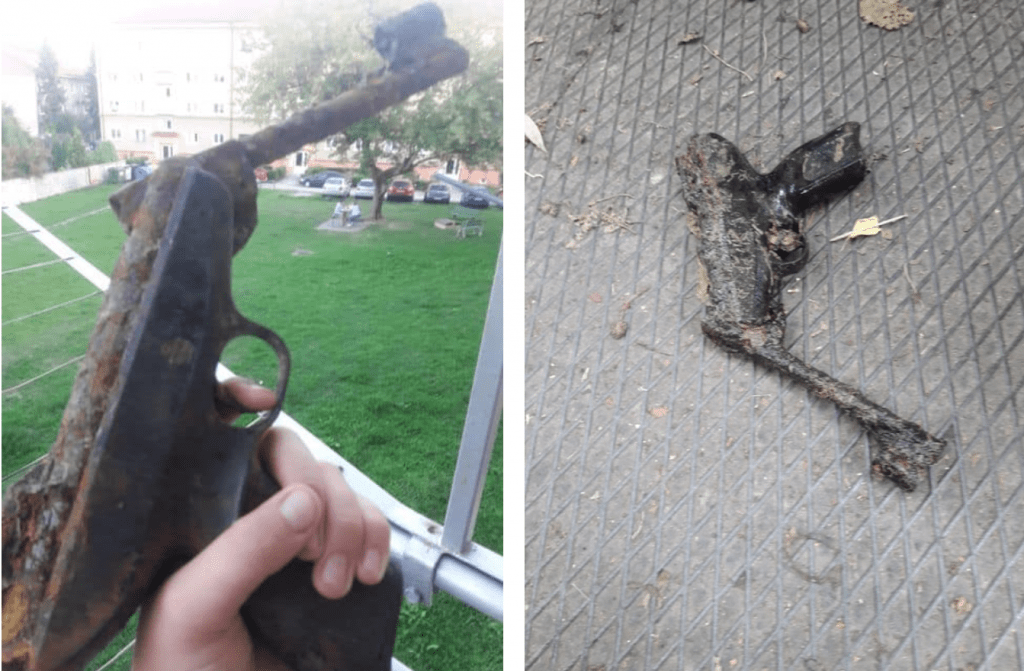
L-ko from the Magnetfiške team found a moped:
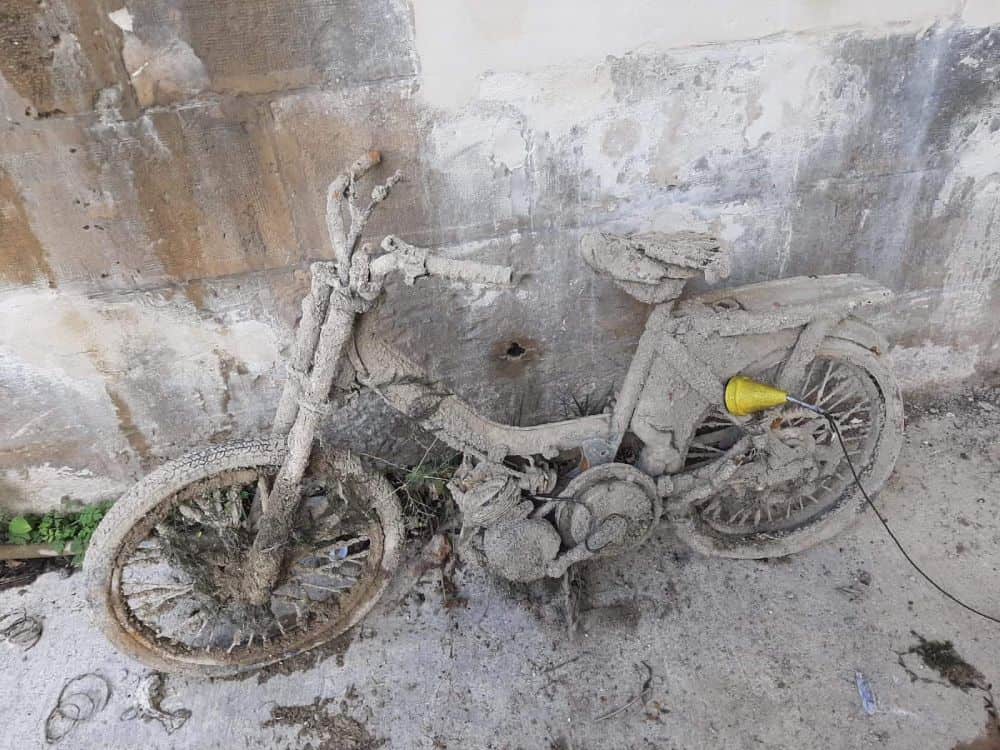
There are many videos and photos of artefacts found in the English-speaking world. 16-year-old James Cork from England managed to find 40 different weapons three years ago:
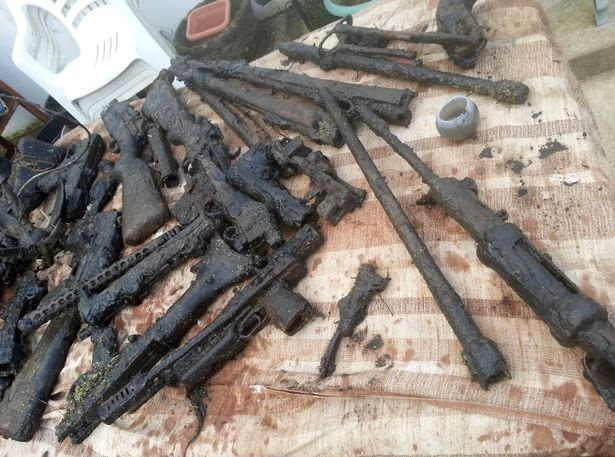
Bicycles are a frequent find. Sometimes they are still usable after extraction:
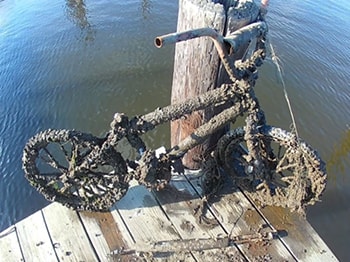
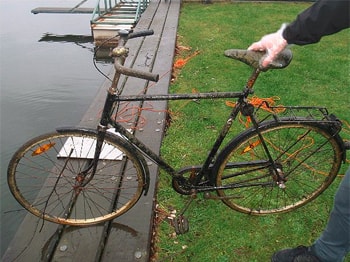
You can also find many oddities: a shopping basket, a statue, a metal bench, a piece of fence, a shovel or a road sign.
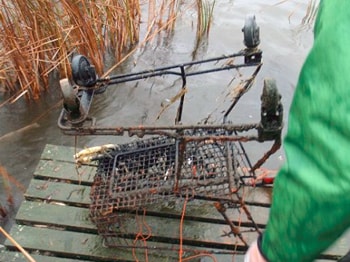
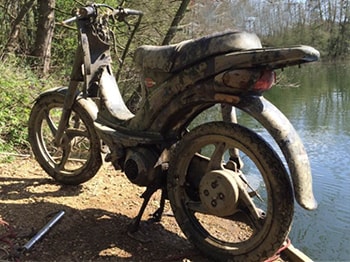
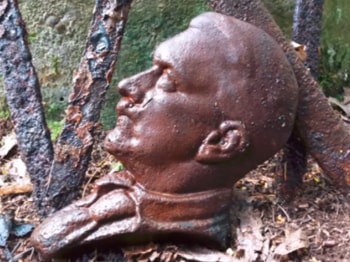
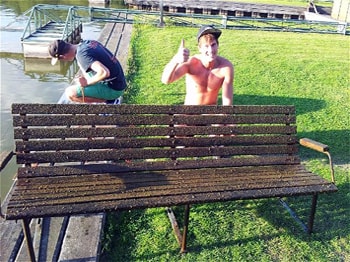
Coins
It is very common for coins to stick to your magnet in the water. Coins are everywhere people go. The following euro coins are magnetic:

In the Czech Republic, the situation is even better. All Czech crowns are strongly attracted to magnets!
Coins are often found in rivers under bridges. Sometimes even a whole change purse can be discovered. If you spend a lot of time treasure hunting with a magnet, you might end up paying back your entire investment in the magnet and rope.
In addition to the finds you’ll want to keep, you’ll probably pull out a lot of scrap metal… We recommend taking along a bag or bucket for all pieces of iron, finally taking the unwanted catches to a scrap metal facility. In addition to searching, you will also contribute to the cleaning of Slovak rivers and lakes.
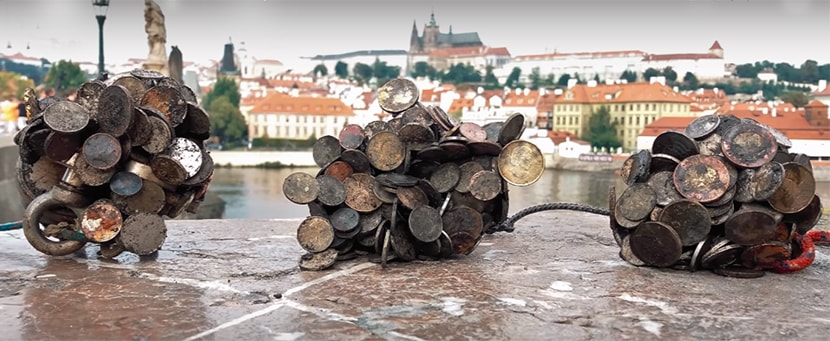
What you will need
Mandatory equipment:
- a strong magnet with an eyebolt for securing the rope
- a solid rope
Optional equipment:
- protective gloves so that you do not injure your hands on sharp objects
- a bucket / box / bag to take home the day’s catches (often a lot of small items)
- a cloth to wipe your hands on and a magnet
- cone to keep the magnet from getting snagged
- steel hook – you cannot pull out some heavier objects with a magnet (for example, a bench or a bicycle), then you can use a rope hook to help
How to choose a magnet
In our e-shop we sell several magnets for magnet fishing. Magnets reach a strength of up to 1,100 kg. But don’t be fooled by these high numbers – this is the force measured under ideal conditions on a thick steel base. Magnets will not touch a metal object with its entire surface in water, and finds are often rusted or clogged with mud and algae.
The stronger the magnet, the better. With a stronger magnet, you can also attract more distant objects. You will find more items in less time.
You may also come across an object that you simply cannot pull out with a weaker magnet. In that case, you can use the steel hook that you tie to the opposite end of the rope. You can’t pull out some objects without a hook (the motorcycle or the bench pictured above).
Even with the strongest magnets, you will not be able to tear the catch from it. We recommend choosing a magnet with a strength of at least 290 kg.
There are two types of magnets: single-sided and double-sided. Double-sided magnets have two advantages over ordinary magnets:
- The eyebolt can be mounted not only from above but also from the side. A magnet pulled from the side slips more easily between rocks and roots. You won’t get snagged in the water.
- They attract objects from two sides.
Double-sided magnet 1,100 kg is the strongest magnet available on orodian.com.
The 94 kg magnet is also suitable for children.
We sell only high quality magnets in our e-shop. They feature not only high breakaway force, but also long range.
Rope selection
The rope should be:
- inflexible
- solid (so it doesn’t tear)
- easy
- not too thin (so as not to cut into the hand)
- long enough (ideally 30 metres)
- abrasion resistant
- light colour (so you can see it well under water)
Our ropes designed specifically for magnet fishing have all these properties. We recommend a 30-metre rope. Most people can toss a magnet more than 15 metres.
If you only pull the magnet with your hands, our rope with a thickness of 5 mm will be enough for even the strongest magnets. It is not humanly possible to tear it apart. If the magnet gets stuck on an obstacle and you want to pull it with a car, a thicker 7 mm rope is more suitable.
Accessories: gloves and hook
A steel hook will help you pull out difficult finds that your magnet won’t hold. Putting on gloves will keep the rope from cutting into your hand less when pulling. Your hands won’t get dirty and will stay warm in colder weather.
How to tie a knot
A good knot is important in magnet fishing. The knot must not come untied in water or damage the rope.
Figure eight knot
This knot is suitable for most magnets. The tighter you pull the rope, the stronger the knot becomes. It certainly won’t come untied and does not damage the rope .
Where to go to look?
The most important rule is:
Look where a lot of people go.
You won’t find much in an isolated area cut off from civilization.
Many finds are in fishing areas, where you often find fishing rods, reels and other fishing equipment.
Mobile phones and cameras are most often found in tourist destinations and other nice places where people tend to take pictures. Pedestrian bridges are the best, from which people will surely drop something in the water once in a while.
There are sometimes bicycles along the cycle paths and roads.
Places easily accessible by car near larger cities are more likely to contain objects thrown into the water by people with bad intentions: safes, weapons, ammunition… These items are also often the biggest trophies of treasure hunters.
You can also discover weapons and ammunition in a former war zone.
You should avoid shallow water where people can pull objects out without the help of a magnet. If the water is exceptionally clear and transparent, it must be all the deeper.
If there is a stream of water flowing in the place, it will be more difficult for people to find what they lost in the water and there will be more for treasure hunters.
How to search
Throw the magnet far from the shore and gradually pull it towards you. Try not to drag the magnet along the bottom, but instead keep it a few centimetres above the bottom. This will help prevent the magnet from getting stuck on rocks or roots. You will also feel it sooner when something catches on the magnet.
If a magnet gets stuck in the water and you can’t pull it out, it’s either caught on a large metal object (better case) or caught on rocks (worse case).
In the first case, it suffices to jerk strongly. If jerking doesn’t help, try pulling from different sides. If that doesn’t help either, you have to go into the water and manually release the magnet. If this is not possible, you can try using a branch in the shape of a “Y” and using it to support the rope from below, which will allow you to pull the magnet higher.
To prevent the magnet from getting stuck and lost, you can put a plastic cone on the magnet. We offer cones for magnets 94 kg, 162 kg and 290 kg:
Tip: try searching from a bridge or a boat.
What can be found?
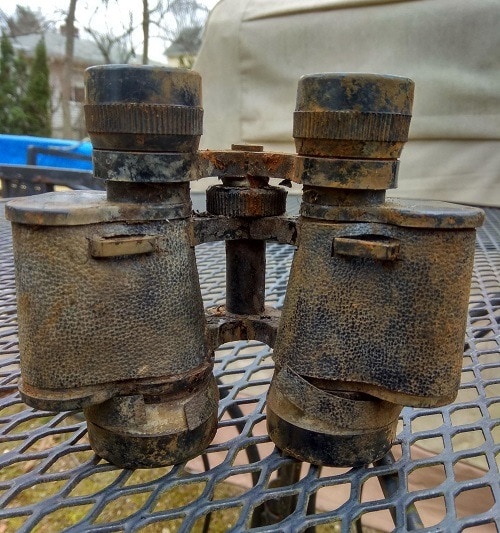
These items have already been fished out many times:
- coins
- knives, scissors, nails and various other tools
- bicycles
- weapons, ammunition
- safes
- cell phones
- cameras
- notebooks
- fishing gear
- wallets
- unidentifiable pieces of metal
Uncommon findings:
- shopping basket
- metal bench
- motorcycle
- gas cylinder
- metal statue of a person
- crossbow
- chair
- jewellery
- binoculars
Is it legal?
Magnet fishing is not expressly prohibited in laws. But follow these rules:
- If you discover an archaeological find, call central office of the Monuments Office.
- If you find a firearm or ammunition, report it to the police immediately.
- Report a valuable find (such as a wallet) to the police.
When reporting an archaeological find, you have the right to a finder’s fee of up to 100% of the value of the find. However, you may not move it until the arrival of the preservationists.
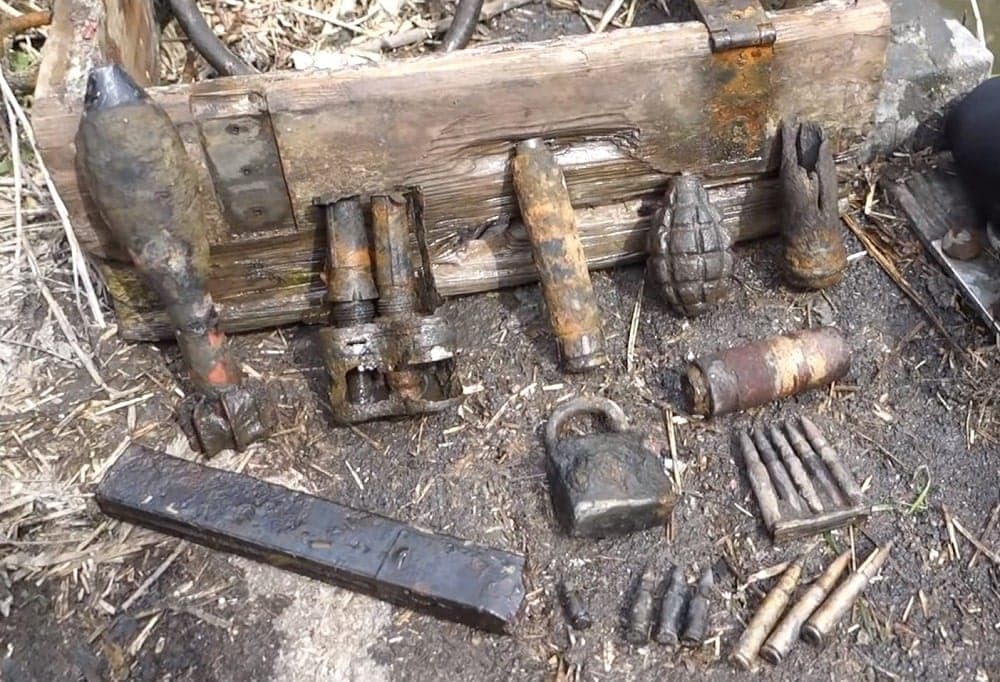
After successful magnet fishing
The magnet should be cleaned and wiped dry at the end to prevent rusting and increase its life.
You will probably pull out a lot of scrap metal while hunting. It’s a good idea to have a bucket or a bag for such waste with you and take it to the metal container or to a raw materials collection facility: you might even earn something. Responsible treasure hunters leave behind not only a clean river, but also a clean riverbank.
We wish you lots of fun and quality finds!
Go magnet fishing!
If you are interested in search with magnets, choose from among our magnet fishing sets. They contain everything you need for magnet fishing:
